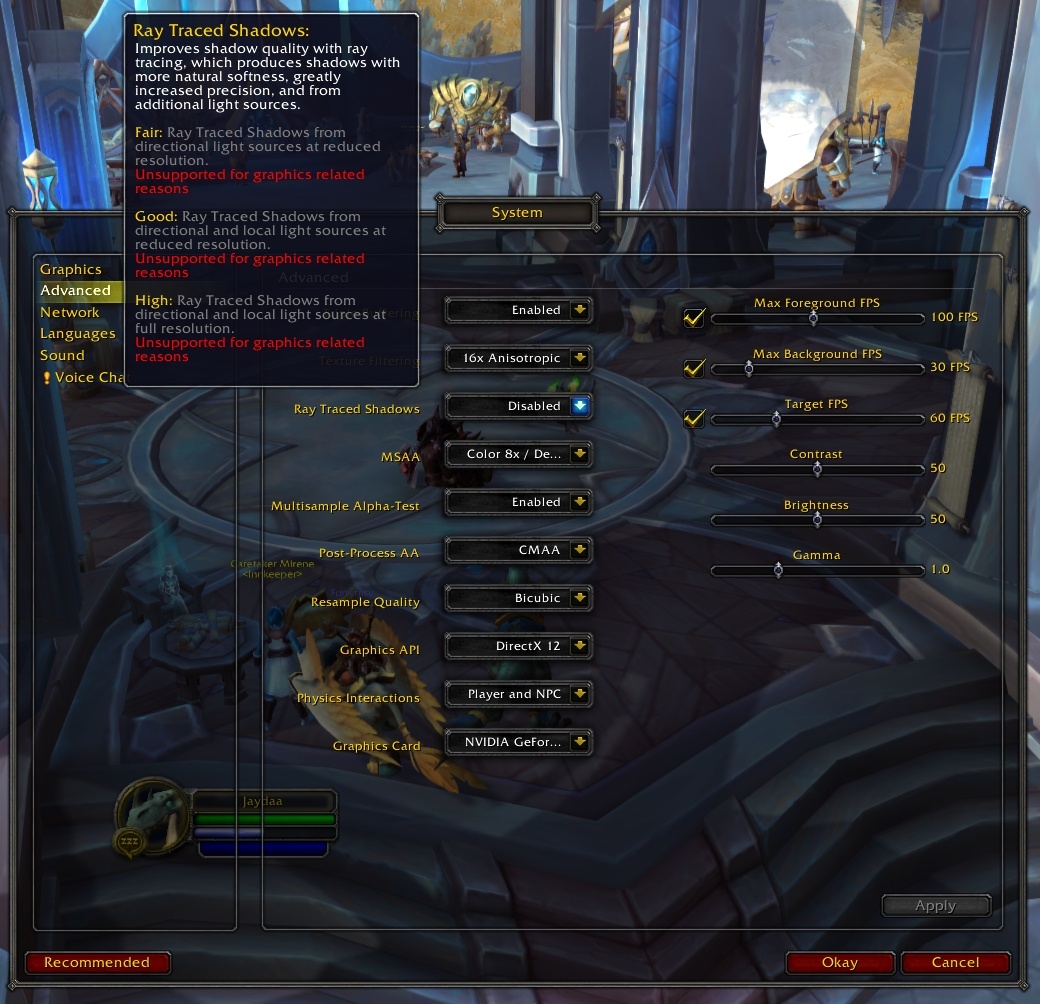We maintain
several branches of UE4, which includes a DLSS 2.0 branch with all current RTX improvements. Our optimizations can improve ray tracing performance by up to 30%, and DLSS can double your frame rate over that. Beyond improved performance, there are also new features for ray tracing. In this post, I highlight the following features so that you have a sense of what’s there:
- Hybrid translucency. This is a form of translucency that uses ray tracing for some aspects of rendering, and raster for other aspects. While it doesn’t support ray tracing translucent refraction, it is faster and more compatible than raster translucency. Bottom line: It provides you with another way to do translucent effects in a ray tracing setting while keeping quality and performance high.
- Support for light functions and light channel masking in ray tracing reflections. Ray tracing reflections are a significant effect. These improvements mean that your light functions and channel masks appear in reflections correctly
...
Content using ray-traced translucency benefits substantially from the stencil masking support to cull unnecessary rays. Translucency content can also gain from hybrid translucency by ignoring particles in ray tracing. With RTX-4.24, some of the largest gains can be observed from improved software efficiency. We have measured over 20% improvement in frame rate tied to improved software efficiency in a real ray-tracing game.
...
In the arena of content compatibility, hybrid translucency stands out as allowing content developed on legacy pipelines to function correctly. The ability to mix ray-traced and raster translucency in the same scene allows older Cascade particle systems to continue to work. They won’t be ray-traced, but most games likely won’t want them to be ray traced anyway. The refraction behavior also matches what was set up for raster.
Shadowing also benefits greatly from a content compatibility perspective. First, ray tracing fires rays from the scene to the light to perform shadow testing, whereas shadow maps project them from the light. This reverses the cull direction of primitives, and it can have challenges with single-sided geometry like you might have placed over a lamp. RTX-Dev allows the game to switch the cull direction to match the effective cull direction used for raster avoiding the issue. The base engine doesn’t do this presently, as the cull direction it uses produces more accurate penumbras. Finally, shadow compatibility is improved by lights in reflections properly obeying the shadow-casting flags applied to lights in the scene, preventing extra lighting on your reflected geometry.



